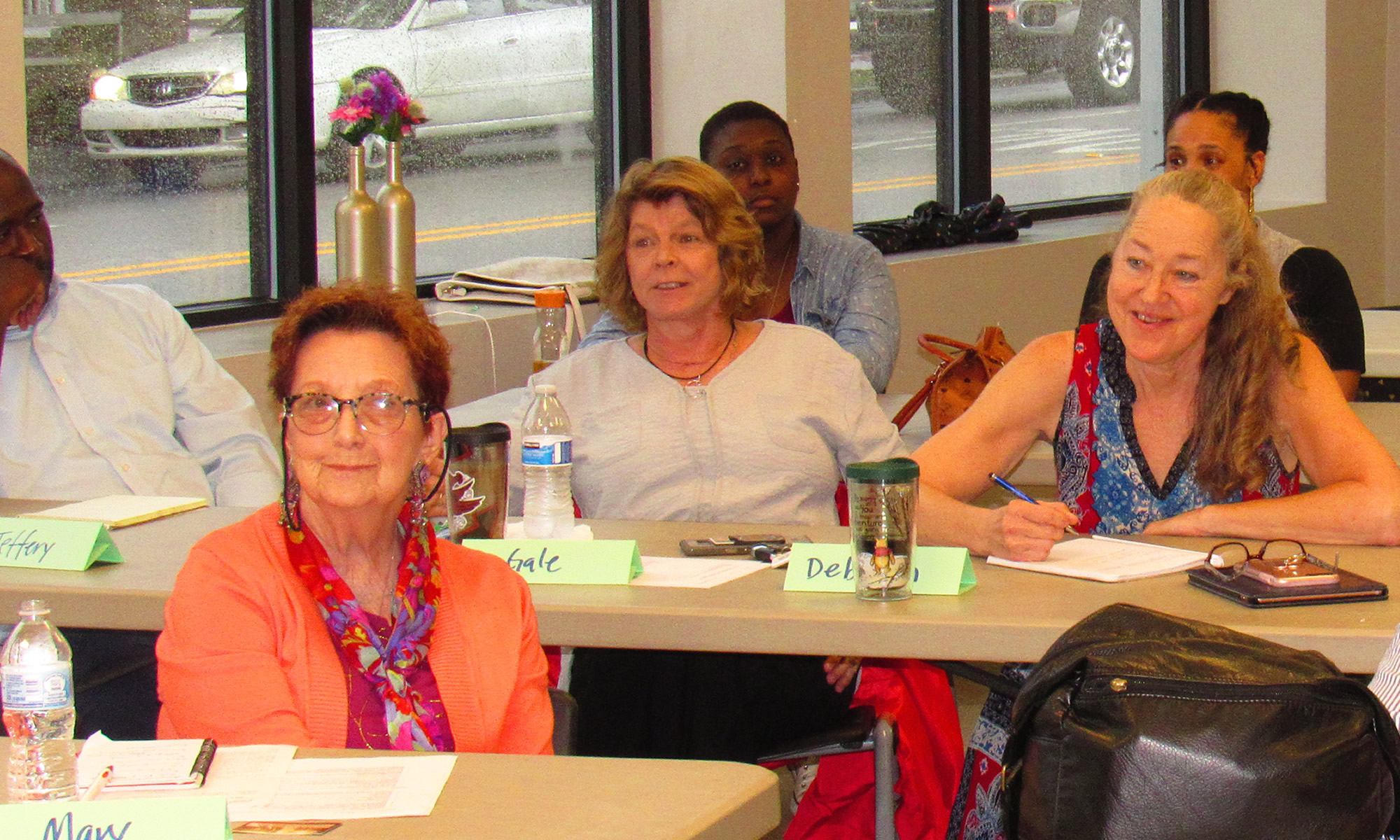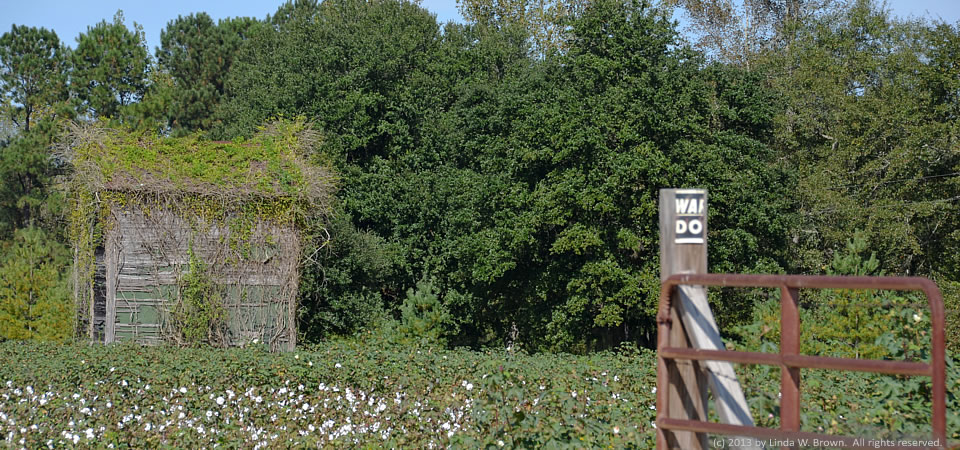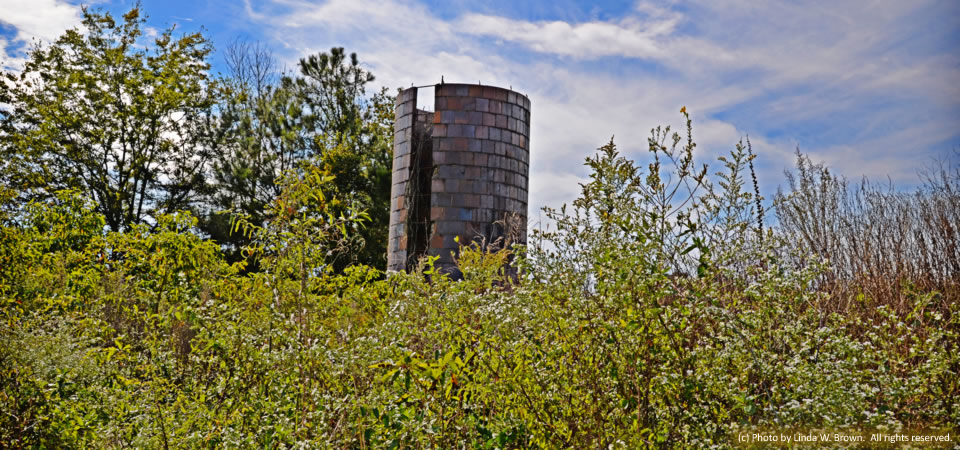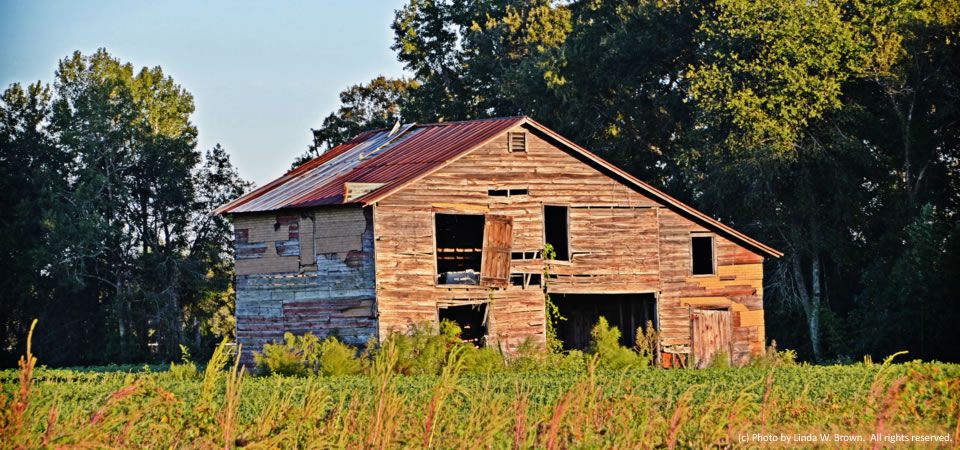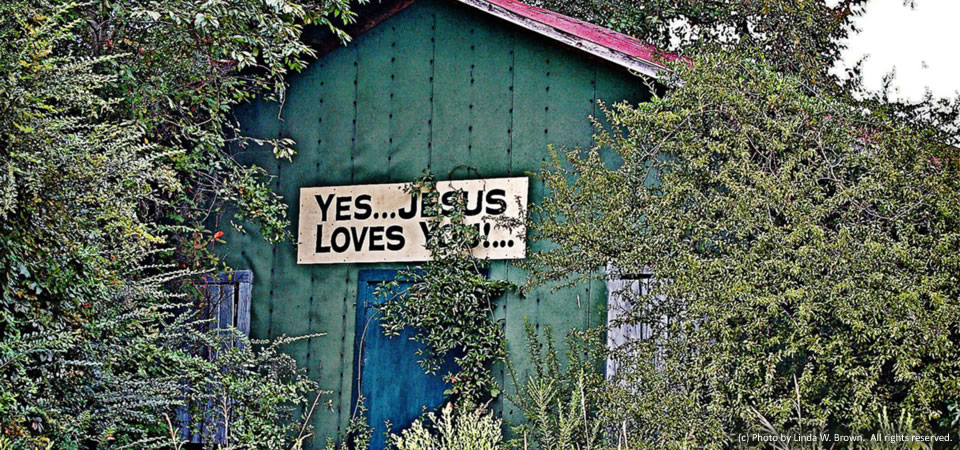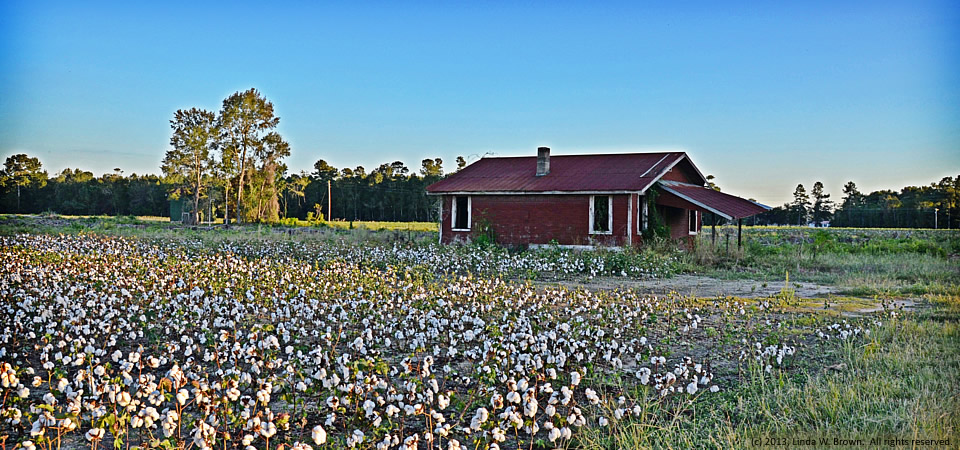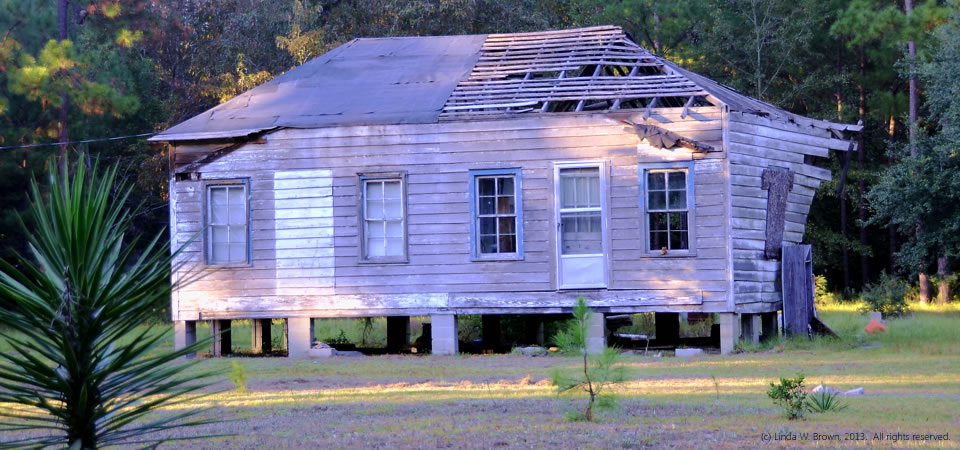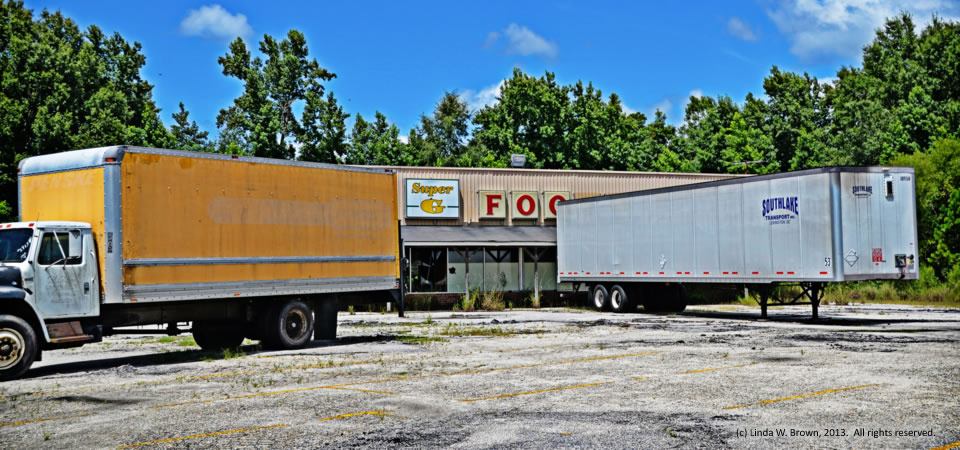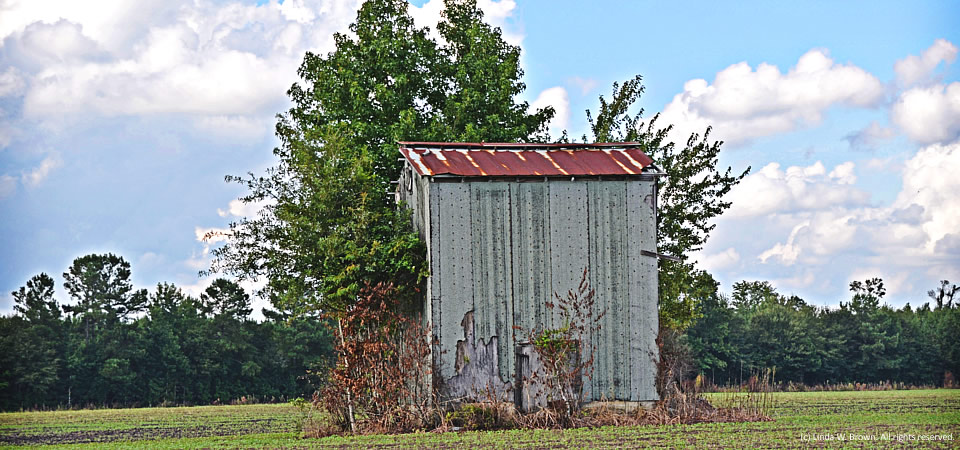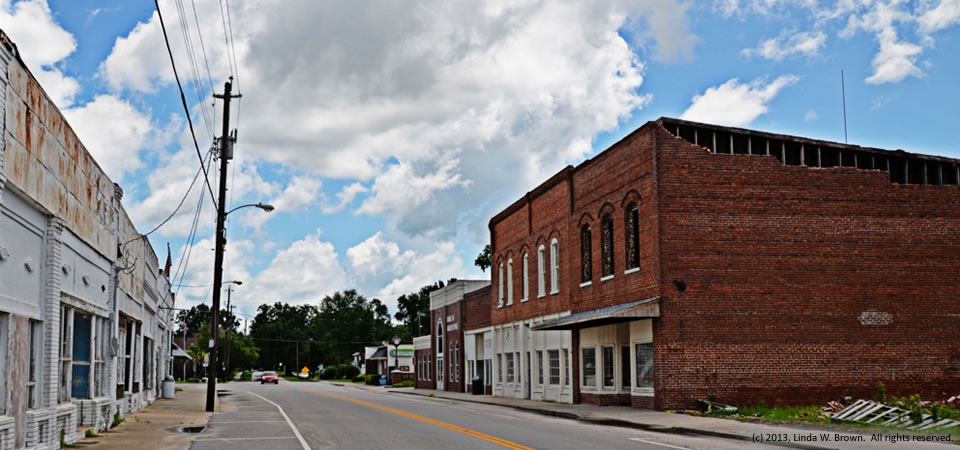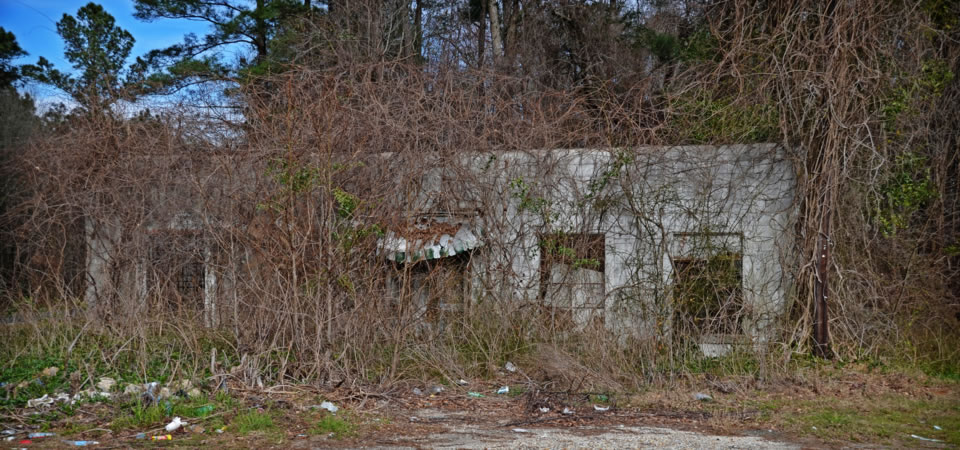
It must be the week of vines. Earlier this week, we posted a South Carolina photo by Linda W. Brown of a bushy tobacco barn in Clarendon County. Now she turns her lens on her home county, Williamsburg County, where she found vines eating up an old rural grocery store.
“I believe this old grocery store was known as Owens’ Grocery,” Linda wrote in October. “It’s on S.C. Highway 261 between Kingstree and Hemingway in the Indiantown community. It’s been closed for many years, although the woman who ran the store died just last week.
“Now, it seems to be a dumping ground for people’s trash. This was also taken on January 26 of this this year. Winter is the only time you can actually see any of the building. During the summer the vines completely cover it.”
Just under 34,000 people live in Williamsburg County, which is about the number who lived there in 1900, according to Census figures. Population peaked in 1950 at 43,807, but has dropped slowly since then.
About two-thirds of county residents are black, with almost all of those remaining being white. Only 2 percent of those in the county are of Hispanic descent. Some 32.8 percent of residents live in poverty, according to the Census. Of the county’s 1,921 firms, 36.5 percent are black-owned — a percentage that is three times South Carolina’s average.
Photo taken Jan. 26, 2013, by Linda W. Brown. All rights reserved.
